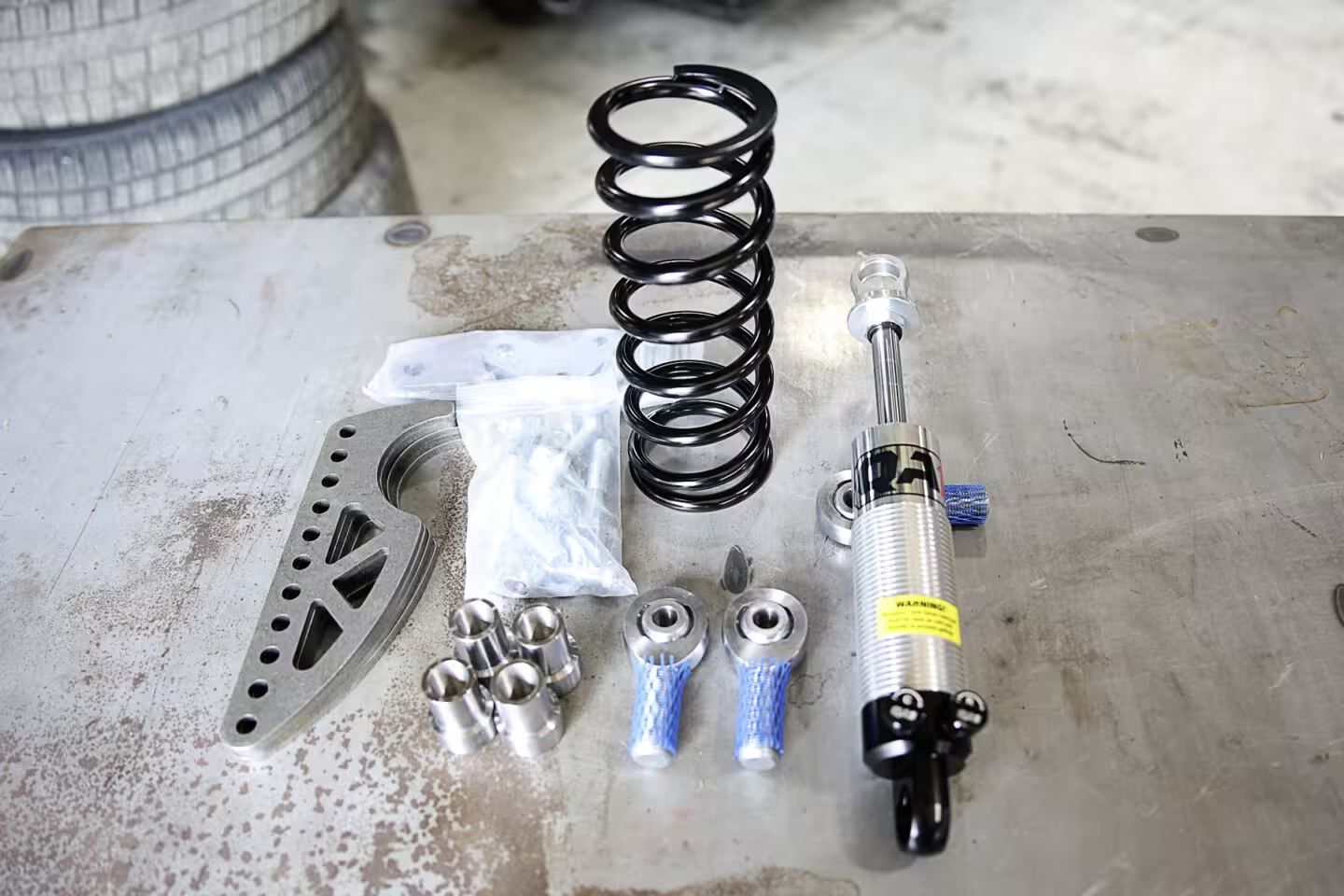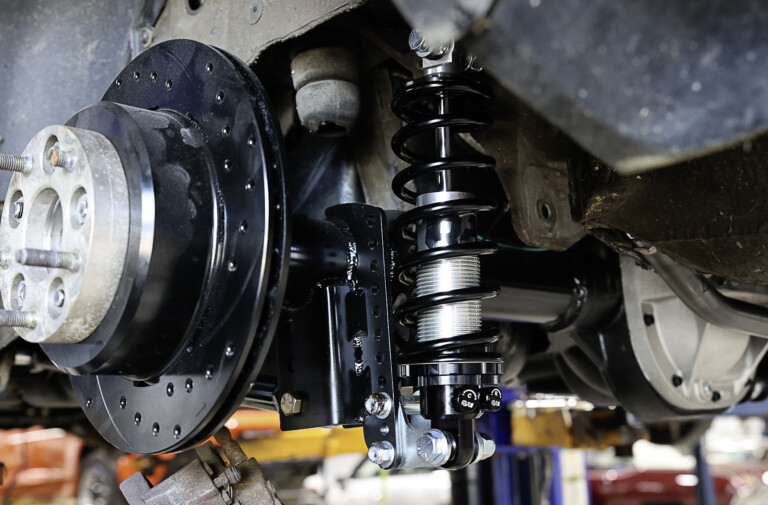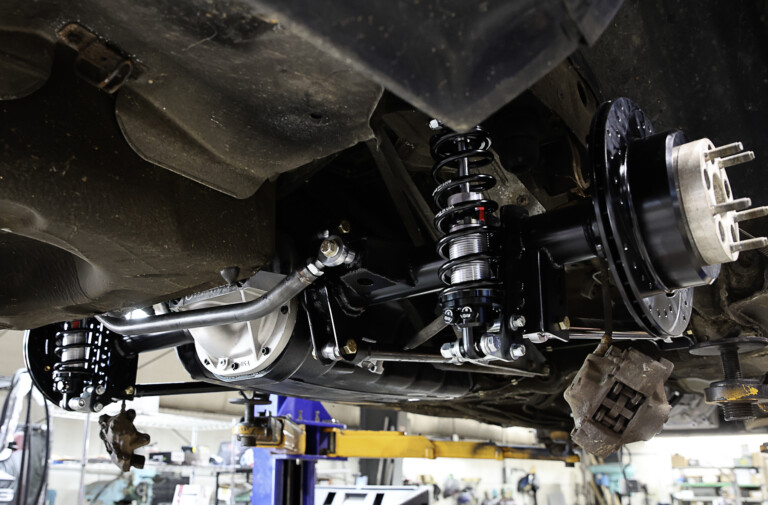There are plenty of direct-fit shock and suspension options for popular vehicle platforms, but what if your project isn’t one of those vehicles? Well, that means you need to start pulling pages out of the old-school hot rodding handbook and make things happen. You have to know where you should be measuring for a new set of shocks and how a custom rear suspension will work with your project vehicle.
Our 1994 Volvo 940 wagon known as “Project Swedish Meatball” needed a set of rear coilovers and a suspension fabricated to work with the Moser Engineering M88 we swapped into the car. The team at Big 3 Racing came up with a plan, and we reached out to Max Prusak at QA1 to get some input on what was needed. In this article, we’re going to cover how you measure for custom application coilover shocks, and the parts we used to build our suspension.
A Shockingly Simple Start
Measuring for shocks, selecting springs, and building a suspension from scratch can seem intimidating on paper, but it’s really not as bad as you would think. It all comes down to devising a well-thought-out plan and recording accurate measurements. As long as you have a solid foundation, the suspension you’re going to create will come together correctly.
Before you measure for the shocks, the vehicle’s stance needs to be locked in, and you should have your mounting brackets where you need them. This will be based on your specific application and how the suspension will be set up. Generally speaking, having the shocks sitting straight up is going to work best for most suspensions. If you don’t have all of this figured out before you measure for the shocks, the shocks could end up with an improper stroke length that will cause the shocks to bottom or top out.
It may seem like daunting, but getting to this point isn’t nearly as hard as you would think.
Once you know how you want the vehicle to sit and know where the shocks are going to be mounted, it’s time to pull out the measuring tape and get to work.
“We like to measure shocks based on ride height. For example, on a solid axle rear suspension, we would like the axle supported to the desired ride height, and from there we would take a center-to-center measurement on the shock mounting holes. This will give us our ride height, and allow us to find a shock that fits with ample travel in both directions,” Prusak explains.
While it…
Click Here to Read the Full Original Article at DragzineDragzine…



